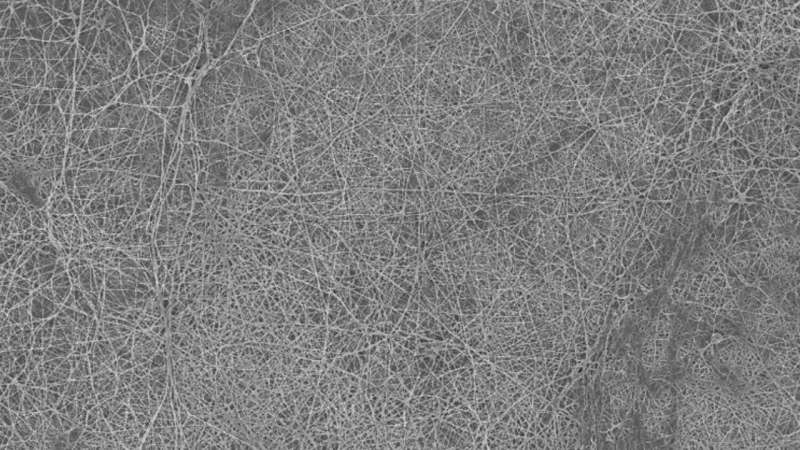Bacterial film separates water from oil

Researchers have demonstrated that a slimy, yet tough, type of biofilm that certain bacteria make for protection and to help them move around can also be used to separate water and oil. The material may be useful for applications such as cleaning contaminated waters.
In the journal Langmuir, North Carolina State University researchers reported the findings of an experiment in which they used a material produced by the bacteria Gluconacetobacter hansenii as a filter to separate water from an oil mixture.
"It's really remarkable to think that these little bugs can make this stuff that is so perfect in many ways," said Lucian Lucia, the study's corresponding author and an associate professor of forest biomaterials and chemistry at NC State.
The biofilm the bacteria make and release into their environment is made of cellulose, which is the same material that gives plants a sturdy structure in their cell walls. However, when bacteria make cellulose, it has a tightly packed, crystalline structure, researchers said.
"It's one of the purest, if not the purest, forms of cellulose out there," Lucia said. "It's very well structured. It's very water loving, and it's got a very high crystallinity, so it packs very beautifully. Once you strip out the bacteria, you have this amazingly tough material that has a real robustness, or toughness."
The bacteria make the film to protect themselves, the researchers said.
"If you leave something like an unwashed dish out, it can turn all slimy and gross—that's a biofilm," said study co-author Wendy Krause, associate professor of textile engineering, chemistry and science at NC State. "Different bacteria make different biofilms. The bacterial film that we're studying is made of cellulose. The bacteria are making it because they live on it and in it. They're making their home."
In the experiment, researchers used the bacteria as factories of cellulose nanofibers. They then removed the bacteria and their non-cellulose residue. Finally, the researchers used the cellulose membrane to see if it could separate water from a solution containing both oil and water.
They found the material was effective at removing water, and it was sturdy.
"The oil doesn't want to go through the membrane; it has a repulsive effect to it," Lucia said. "It's super fat-hating."
"If the oil and water were highly mixed, it doesn't matter," Krause added. "You could put an immersion blender into the solution, and the membrane will still separate the water and oil."
Researchers see a variety of potential applications for the material in situations where you need to recover water from an oily mixture—whether it be to clean water contaminated with a textile dye or for environmental remediation. In future work, the researchers want to explore how they can tailor the membrane by chemically modifying it for certain applications.
The study, "Bacterial Superoleophobic Fibrous Matrices: A Naturally Occurring Liquid-Infused System for Oil-Water Separation," was published online in the journal Langmuir on Feb. 19.
More information: Zahra Ashrafi et al. Bacterial Superoleophobic Fibrous Matrices: A Naturally Occurring Liquid-Infused System for Oil–Water Separation, Langmuir (2021). DOI: 10.1021/acs.langmuir.0c02717
Journal information: Langmuir
Provided by North Carolina State University





















